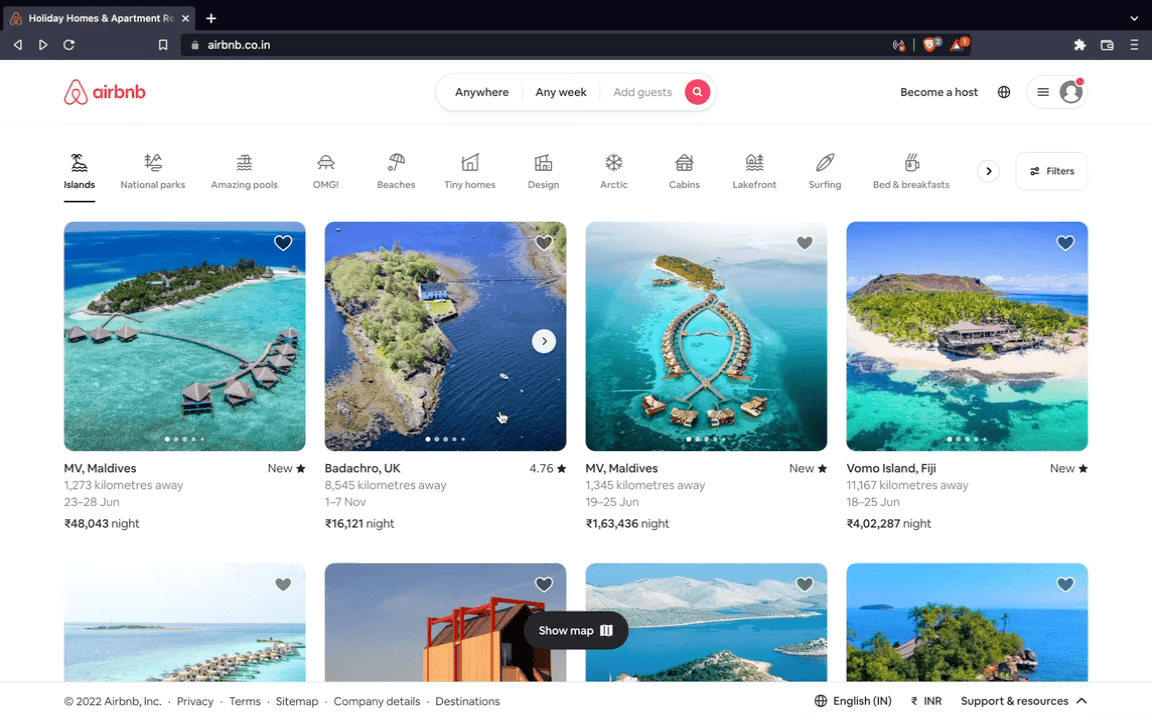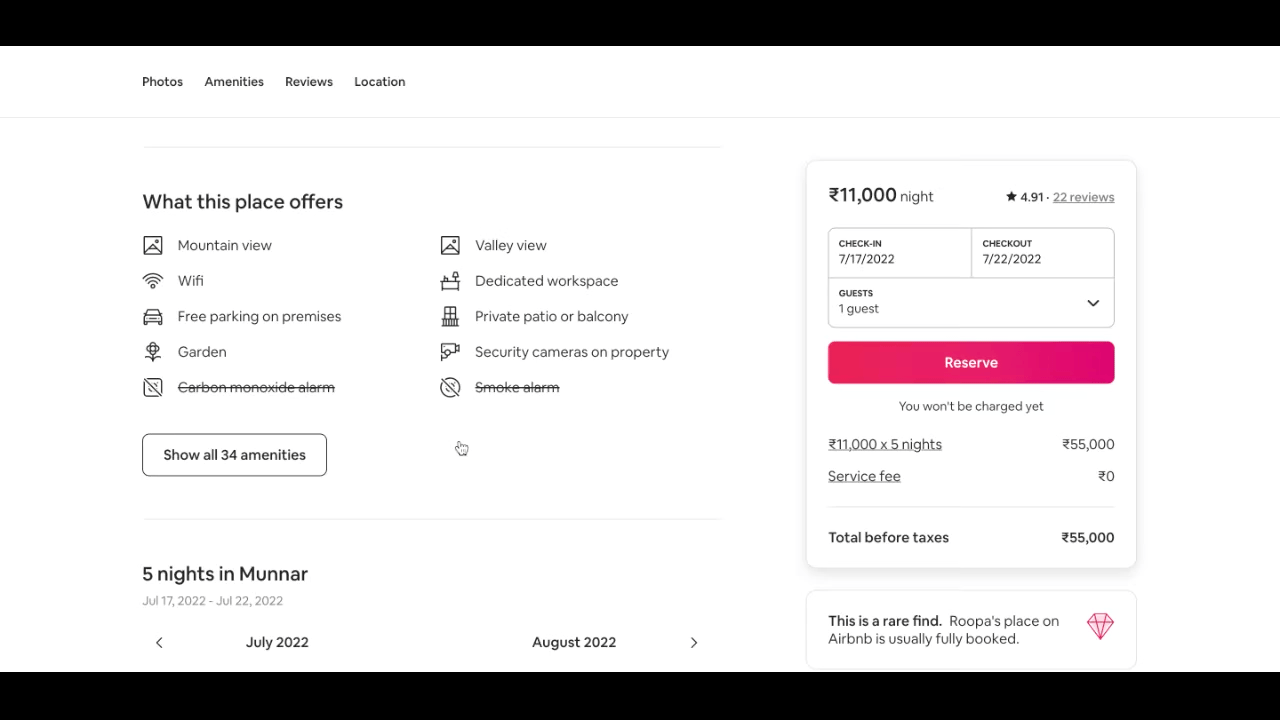6 Tactics Ecommerce Businesses can Learn from Airbnb’s Marketing Strategy (+Bonus Tip!)
They were two broke men.
Broke, but smart.
In 2007, Brian Chesky and Joe Gebbia had no job and had trouble paying their rent. They badly wanted to earn some extra cash. During the same time, there was a local industrial conference in San Francisco, and all the city hotel rooms were booked.
They saw it as an opportunity - bought a few airbeds, and put up a site called ‘Air, Bed, and Breakfast.’
A 30-year-old Indian man, a 45-year-old from Utah, and a 35-year-old woman from Boston slept on their floor for $80 a night. And Airbnb was born!
The idea seems pretty straightforward — make money by matching travelers with hosts.
Cut to 2022, Airbnb now has a market value of $100B!
So, what is Airbnb doing right, and what can eCommerce businesses learn from it?
How is it linked? Read on.
E-commerce is an ever-evolving industry with a demand for new features all the time as customers warm up to the comfort of shopping online. Speaking from our experience, eCommerce is one of the most challenging industries to exhibit the wonders of marketing strategies.
In this blog, we will not discuss everything that Airbnb did right. Instead, we will only highlight the successful marketing tactics that can be applied to eCommerce businesses.
Let’s look at 6 understated tactics that have added to the growth of Airbnb. A bonus tip at the end will show you real examples of how retail brands have gone one step ahead with their marketing strategy (more on this later).
Here are the 6 underrated marketing tactics by Airbnb and what eCommerce store owners can learn from them.
1: Open listings in a new tab.
With the Airbnb web experience, users are redirected to a new tab when clicking on a listing. It helps users avoid losing track of their options and allows them to continue exploring, especially if that first listing didn’t work out.
This is a great way of increasing user focus!

Ecommerce Takeaway:
Get your product to open in a new tab when your customer clicks on it. This way, shoppers can always return to other collections and browse through more products if they don’t like what they see.
2: Prompts users to add important data.
When you search for a place on Airbnb, you’re (of course!) encouraged to add the dates for your trip.
It turns out that by restricting the results to properties that are actually available during your trip, you are not distracted with better but unavailable options. This naturally increases the chances of you booking a property. Not only that, but Airbnb also shows you some of your recent searches in case you need to jog your memory during your second and third visit to the site.
Ecommerce Takeaway:
Give your shoppers an option to set a filter on their preferred size. This will show the products your customers want to purchase without size restrictions, unavailability, or increasing sales. Win-win!
3: Create scarcity with clever promotions.
If you’re a Gen Z, you’d probably call it FOMO.
Whatever it is, it’s a time-tested principle that works for marketers. Airbnb uses a subtle microcopy below its property pictures, adding, "This is a rare find. This property on Airbnb is usually fully booked.” This microcopy gives users a reason to act immediately by conveying a sense of scarcity. It’s a powerful motivator indeed!
Ecommerce Takeaway:
Push your users to believe that the product they like is in demand. Highlight the limited stocks with microcopy such as, “Only 6 left,” “4 sold in the last 2 hours,” or “selling fast.” Or using countdown timers to encourage customers to buy before the timer runs out. It increases impulse purchases and boosts sales.
4: Highlight your hero features.
Airbnb reminds the users what’s great about the property they’re booking (e.g., the location, the amenities) and helps them see precisely what the property offers. This helps the users choose the best within their budget and leaves no room for reconsidering or canceling at the last moment. All this information leads to an informed decision.
Incredible conversion wins is what Airbnb gets next.

Ecommerce Takeaway:
Appeal to your customer’s senses by giving them imagery of what the product will feel like when they use it and how it fits into their daily lives. A detailed product description highlighting the features lets customers know what they are buying.
Don’t cut back on writing great product copy for your eCommerce store. We repeat, don’t!
5: Set up smart defaults to reduce friction.
For property owners (aka hosts), listing down properties involves dozens of questions — their availability, price, and listing title. Airbnb sets default answers (that also act as a suggestion on how to frame their responses) to these questions, making it easy for new hosts to move through the flow without friction.
Ecommerce Takeaway:
Let users create an avatar for themselves in your store. For example, in an apparel store, the avatar will save their preferred sizes for different product categories. When they revisit your store, they can choose the avatar they are shopping for, and the store will automatically apply size filters, making it easy for them to shop for themselves or their family members.
If you can make your customers’ lives easier, why not?
6: Answer questions and address fears
Airbnb has insurance coverage that handles all the guest damages. They let their hosts know about their insurance coverage. When faced with property damage, the hosts know Airbnb will help them sort it out. This makes them feel more comfortable listing and renting their properties on Airbnb.
Ecommerce Takeaway:
Customers are more likely to buy products from your store when you can guarantee them the support in case they don’t like them. It could mean a full refund on returning the product or an exchange offer. Prompts like “30-day return policy” and “Refundable in case of physical damage” can help level your customer’s confidence in buying from you.
Adding these prompts right below the product images can help boost sales.
The golden rule of microcopy holds - small words often have a significant impact!
Bonus Tip: Try hospitality marketing with Airbnb!
If you have covered all the tips mentioned above, it’s time for you to go the extra mile. It’s time not just to learn from Airbnb but also to include it in your marketing efforts.
Brands use hospitality as a new avenue to connect with customers and build brand loyalty. Some companies have jumped on the retail-becomes-hospitality trend. These retail brands are leveraging the power of Airbnb as a marketing tool.
Here’s an example of what Taco Bell did -
Taco Bell took over a hotel in Palm Springs, California for a weekend; and this was sold out in under 2 minutes!
This allows the eCommerce brand to showcase its products. If you sell home decor, the guests renting out a property with your decoratives get to experience its feel. If you sell bathrobes, towels, or cookware, the guests get a chance to experience how it suits their lifestyle. Even the less obvious items like honey can find their way to them with breakfast.
For starters, here is a short but quick eligibility checklist to know if running an Airbnb under your brand’s name is something for you:
- Can the brand afford it? (Definitely, something to start with.)
- Is it a lifestyle brand that warrants it?
- Can there be an easier way to do hospitality marketing?
- Can you make something unique? (Duh!)
- Can we deal with a potentially low ROI?
Now, if all of this wasn’t enough, the giant eCommerce brand, Amazon, took this a notch higher by owning a resort named “Amazon Resort. This resort hosts social media influencers and is an initiative to bolster influencer marketing plans. Check this clip that Amazon posted on its Instagram channel.
There’s always a long way to go and more that you can do for your online shoppers. Ultimately, it always boils down to what your brand stands for and what your customers are looking for.
So, which tactic would you choose to begin with and why?
If you cannot decide for yourself, shoot an email to hello@coderapper.com.
Our eCommerce experts at CodeRapper work with eCommerce stores across the globe to help them with different kinds of projects— from site audits to custom design to platform development to marketing.








